Crevecoeur Chicken: A French Heartbreaker
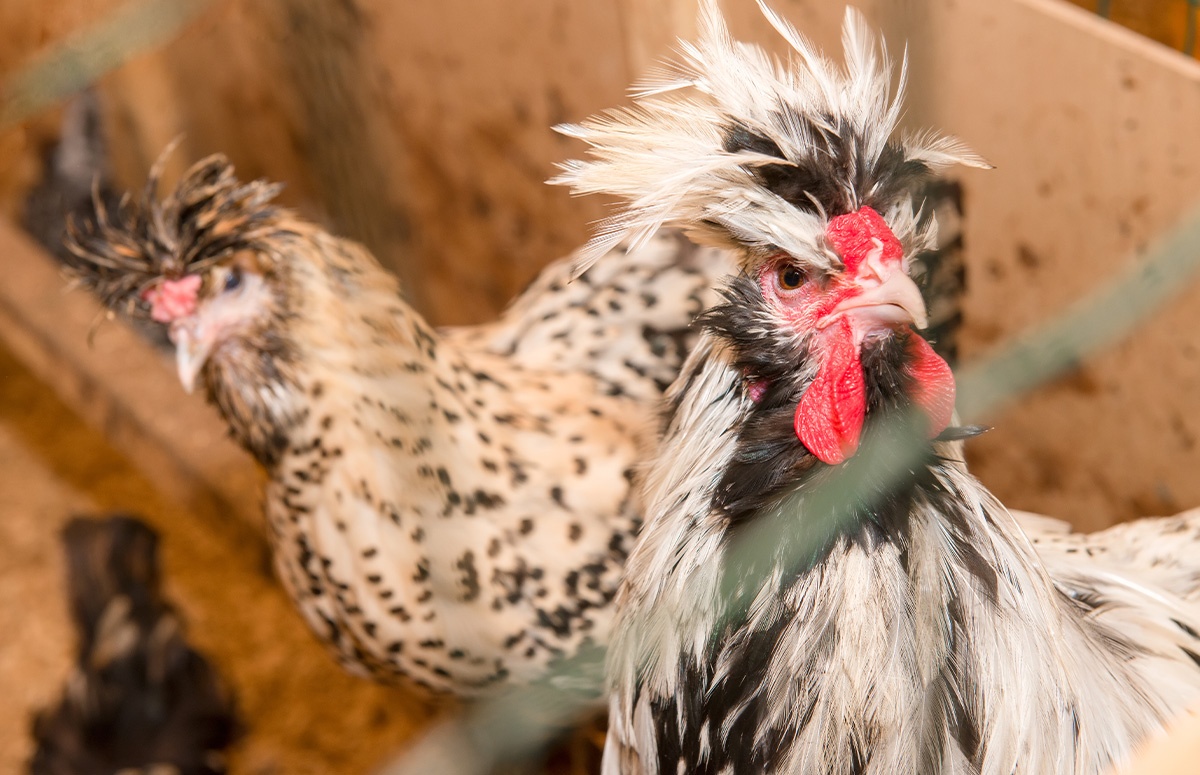
If there ever was an award for best chicken breed in the world, the Crevecoeur chicken deserves a spot in the running. But don’t just take our word for it. Let’s list some facts about this amazing chicken and how it managed to stay a top choice despite what it’s been through.
- Crevecoeur hens lay around 3 eggs weekly
- Old French breed, considered rare
- Very friendly and docile
- Not fond of cold and wet weather
| Eggs | Between 120 – 150 eggs yearly |
| Egg Color | White |
| Egg Size | Medium |
| Weight | 6.5 lbs – 8 lbs |
| Hardiness | Not cold tolerant |
| Temperament | Friendly |
| Beginner-friendly | Yes |
| Color | Varies |
Characteristics
Crevecoeur chickens are medium-sized birds with compact, well-proportioned bodies and clean, short legs. Their legs are clean and characterized as black to slate blue in color and end with four toes on each foot.
Although generally solid black in color, three other color variants exist, namely, white, blue, and cuckoo. The black color is the only one officially recognized by US and UK bodies as particular to the breed.
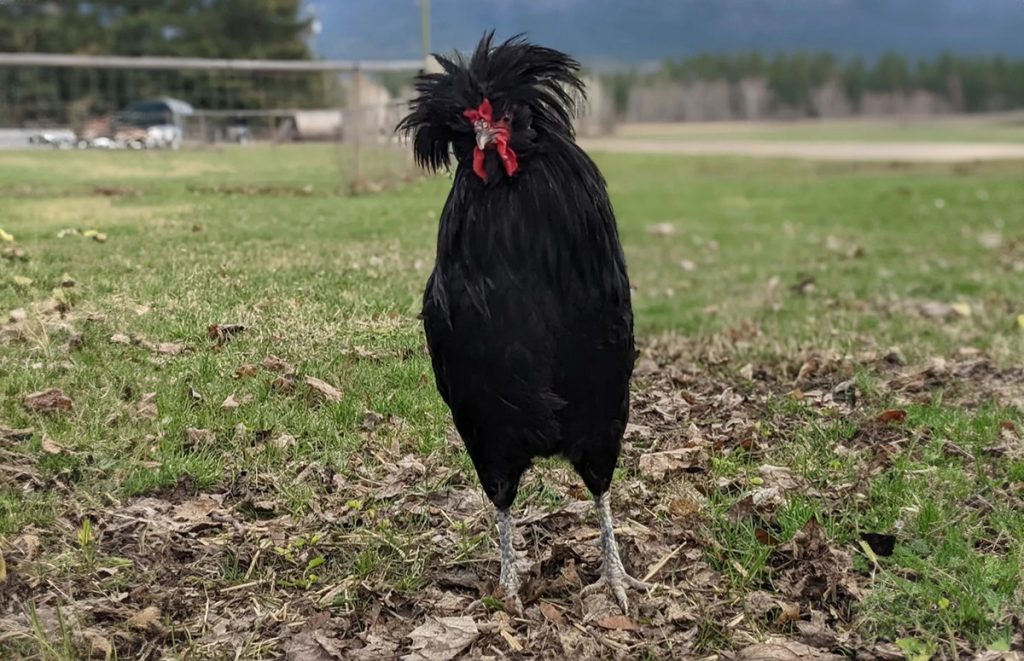
Crevecoeur chickens weigh 8 lbs for roosters and 6.5 for hens. Alternatively, the Bantam-variety Crevecoeur weighs 30 oz for roosters and 26 oz for hens.
This breed has a very beautiful, bright red v-shaped comb. This is the accepted physical characteristic based on the standards set for this particular breed. They have reddish bay eyes and a beautiful beak that gradually darkens from the tip to the horn. It fully terminates as a dark ring at the base of the beak.
The bright red coloration of their small wattles and earlobes brings color to the chicken’s gorgeous visage. This bird is topped off with a full, beautiful crest on its head and beard.
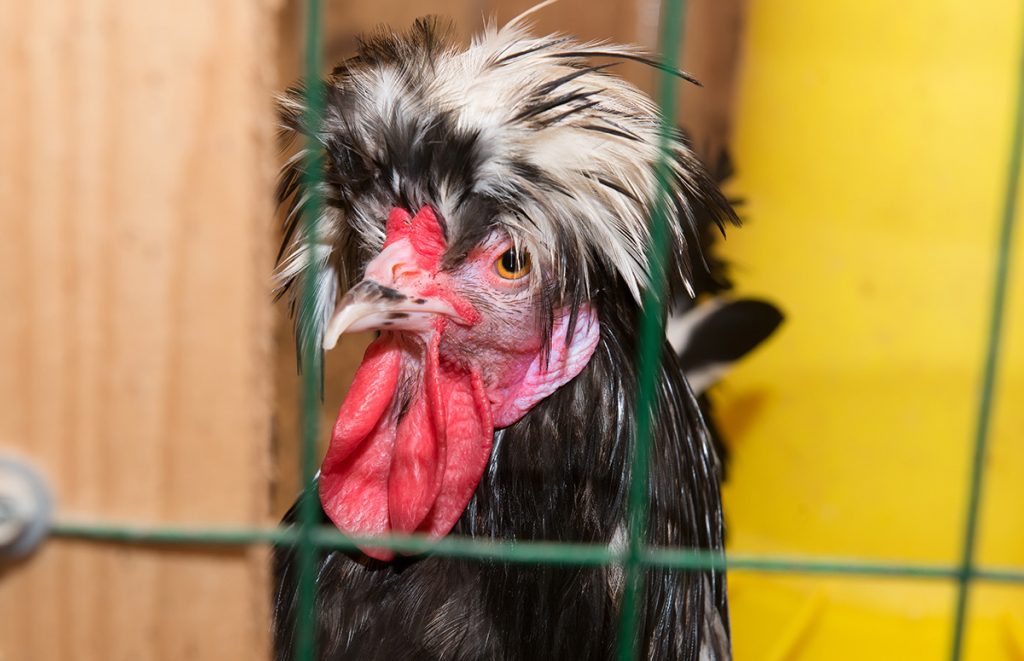
Breed Profile and History
Crevecoeur chickens originate from the small town of Crevecoeur-en-Auge, Normandy. Its exact ancestors are a secret, but it’s believed the famous Polish chicken was involved in the breeding process.
Their name means ‘broken heart’ in French. The name stems from the infertile land, which made it difficult for peasants at the time to raise crops and broke their hearts in the process.
French farmers kept the Crevecoeur breed as a staple animal in their farms. They served two purposes: meat and egg production. Neither of which the breed seems to be particularly good at.
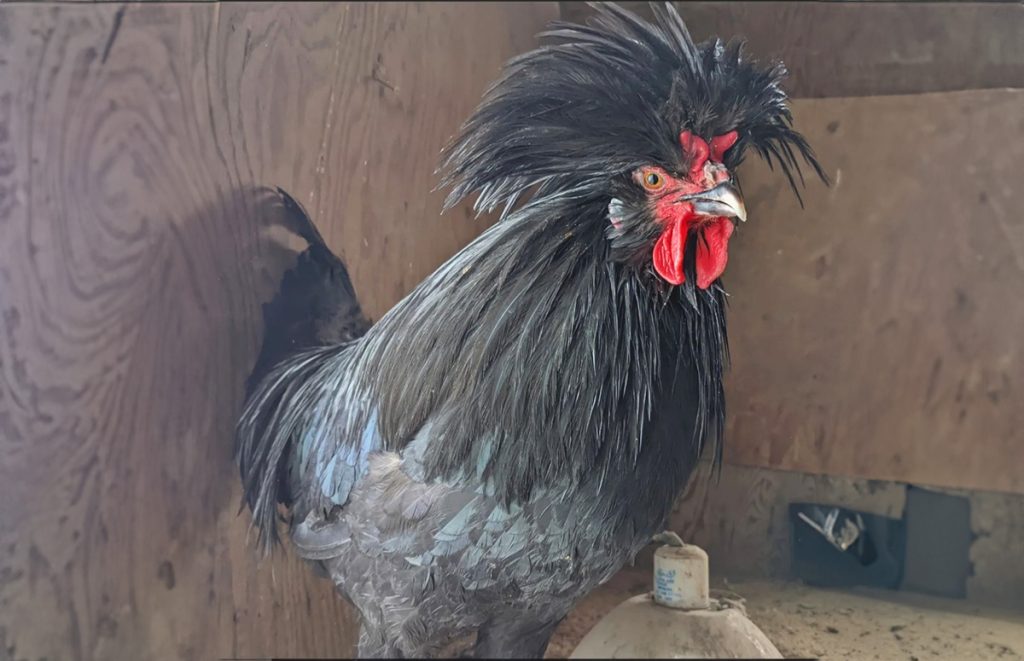
The Crevecoeur chicken is listed as endangered by the Food and Agricultural Organization (FAO) as of 2007. The breed was first introduced to America in the 1800s, particularly from 1852 to 1867.
Within those 15 years, some states deemed the chicken too fragile.
Because of that, importation stopped for three years. It only resumed in 1870 after the demand for the breed rose again. Crevecoeurs remained popular until the 20th century.
Effects of War on the Breed
During the First and Second World Wars, the population of this breed suffered greatly and virtually disappeared for a time until recovery efforts to save the breed began in 1976.
The reason for its near extinction was that, during the Second World War, the German army that reached Normandy nearly ate the entire population of the birds within two years, save for a few that some farmers managed to hide.
Jean Claude Periquet is regarded as the one who initiated the breed’s recovery in 1976. But let’s not forget that if not for the valiant efforts of some farmers, we would probably not know the joys of keeping Crevecoeur chickens today.
In 1995, Crevecoeur chicken numbers were listed as anywhere between 100 to 1000. Not bad for a breed nearly wiped out by two wars.
Egg Production
As an egg layer, there’s nothing extraordinary about the breed. Hens lay between 120 to 150 eggs per year. These are medium to large eggs that are generally white in color, although others may have a slightly darker tint to them. The eggs normally weigh around 55g.
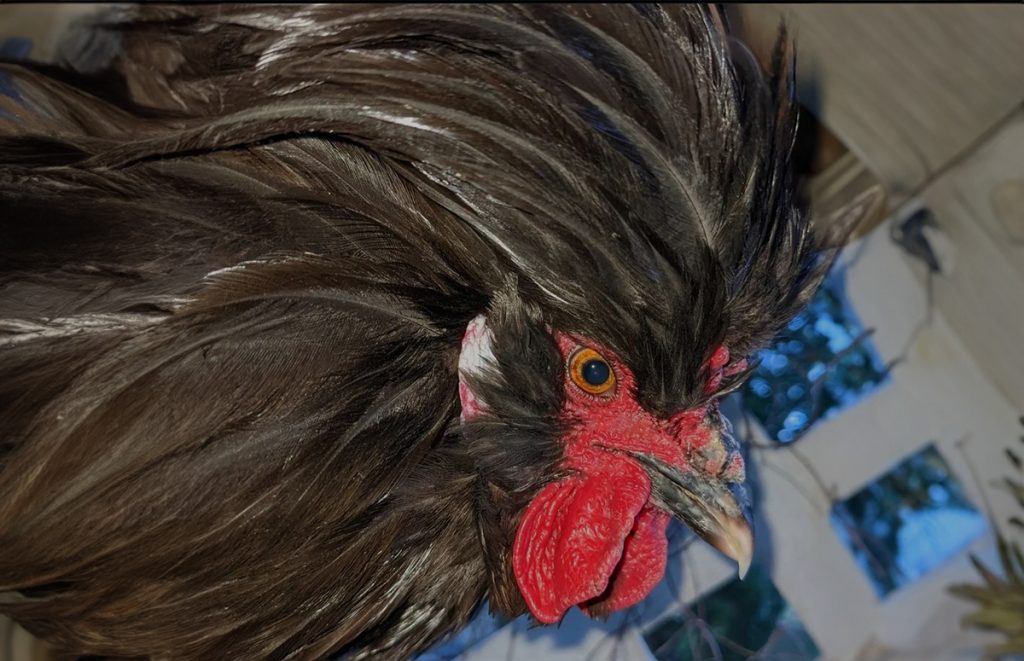
Nonetheless, they are great for personal consumption or for selling to other consumers. Hens can lay eggs for several years and usually do so when they are 20 weeks old. At 120 to 150 eggs per year, Crevecoeurs aren’t the best egg-layers in the world, but you’ll still get around three eggs weekly.
Meat Production
Crevecoeur chickens were primarily raised for meat production. But being medium-sized birds, they aren’t the best meat birds compared to broilers nowadays. What makes them a good meat bird, though, is the high proportion of fine, short meat to offal and their small, fine bones.
Their white skin also helps to make them particularly attractive as a food source. The leg meat, on the other hand, bears a slightly darker color akin to that of a duck.
Personality
Crevecoeur chickens are hardy animals that can withstand heat easily. It’s the cold that gets them. They are adaptable to most climates but can’t stand too much cold, especially during winter. Their crests and beards tend to get wet and freeze easily. Providing Crevecoeur chickens with the proper care in winter is essential, and they are not the best breed to keep when living in harsh environments.
They do well in confinement, are seemingly content when caged, and can easily be reared on moderately dry soil. It’s best not to let their run become too muddy; they won’t like it.
Crevecoeur chickens are naturally active but remain docile and sweet-tempered towards people. This is perfect for chicken fanciers who want to own a unique animal from an internationally endangered breed.
Final Thoughts
These days, Crevecoeur chickens are raised solely as (backyard) pets and for exhibition purposes. It was first recognized by the American Poultry Association with the Standard of Perfection in 1874. This came four years after the breed was reintroduced to the American market.
Crevecoeurs can be meat birds, egg layers, or pets. A true triple heartbreaker, that will be a great addition for your backyard flock.
To learn more about chicken breeds, check out our ‘Chicken Breeds Page‘ to see every specific breed we address. Or go to our listicle breed summary on ‘The Classroom‘, or, if you’re unsure where to start, take a look at our ‘Chicken Breeds: Ultimate Beginners Guide‘.
Credits Featured Image: @hatchitfarms (IG)






















